
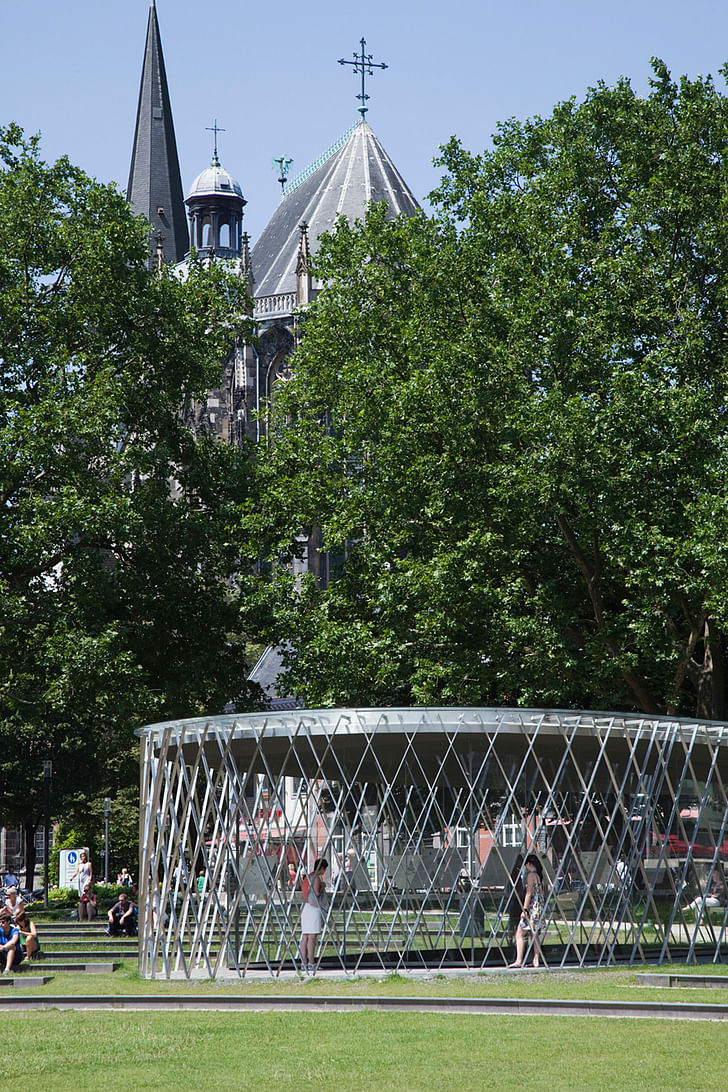
ShowCase is an on-going feature series on Archinect, presenting exciting new work from designers representing all creative fields and all geographies.
We are always accepting nominations for upcoming ShowCase features - if you would like to suggest a project, please send us a message.
kadawittfeldarchitectur’s Archaeological Pavilion in Aachen, Germany brings together the city’s archaeological history with its sociological present, situated in the midst of the city's cherished inner-city park, the Elisen Garden. A rhombus-patterned metal mesh wraps around a glass-encased exhibition, featuring a model of the city’s different settlement styles throughout its history. The exhibition is designed to make it look like the model existed just underneath park's ground level, suggesting that more historical artifacts may be lurking just beneath the rest of the city. Situated in a public space and encased only by a meshed enclosure, accessible in all weather, the interior of the pavilion is a kind of inter-space between public and private, aiming to bring Aachen’s history into its citizens public lives. The oval-shaped, semi-transparent pavilion allows for constant views of the the exhibition and the surrounding park, enabling the visitor to consider the city's past and present simultaneously.
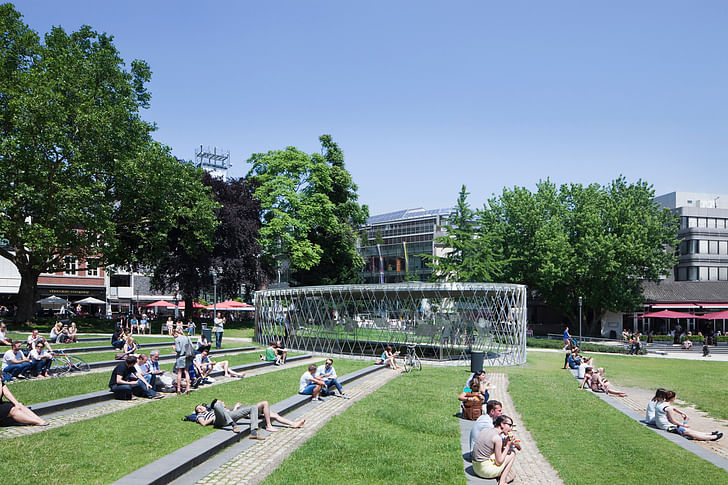
Project Description from kadawittfeldarchitektur:
In the heart of Aachen, within view of its famed cathedral, is the city’s most beloved inner-city park, the Elisen Garden. During extensive archeological excavations, amazing discoveries were made: spanning from the Neolithic period (4700 BC) to the high and late Middle Ages (ca. 910 - 1500) there is evidence of all essential periods of the history of settlement in Aachen from the birth of Christ to the present. In order to preserve this discovery and so the public can experience it, an area of 60m² was to be roofed with a protective shell, where two-meter deep excavations overlap. The architectural concept of the competition-winning design of the archaeological pavilion parallels the particularity of the site – the layers of various settlement structures of several eras of urban history of Aachen find an echo in the design of a pavilion with multilayered elements.
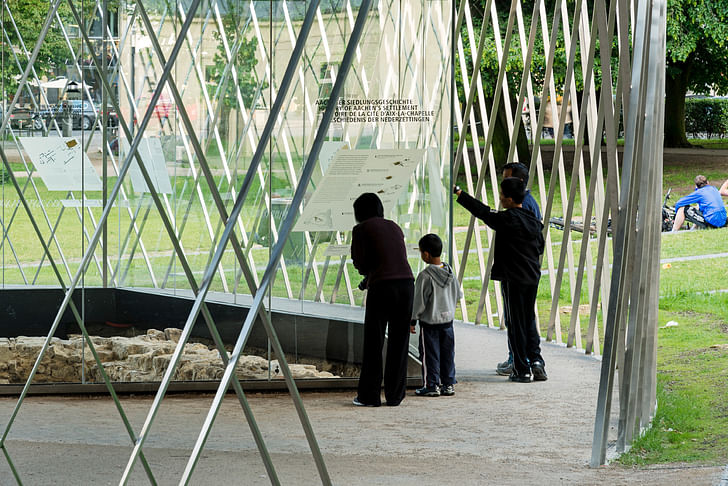
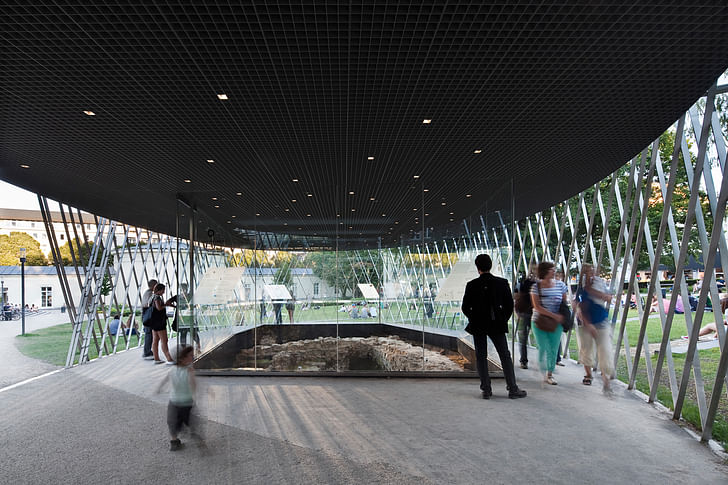
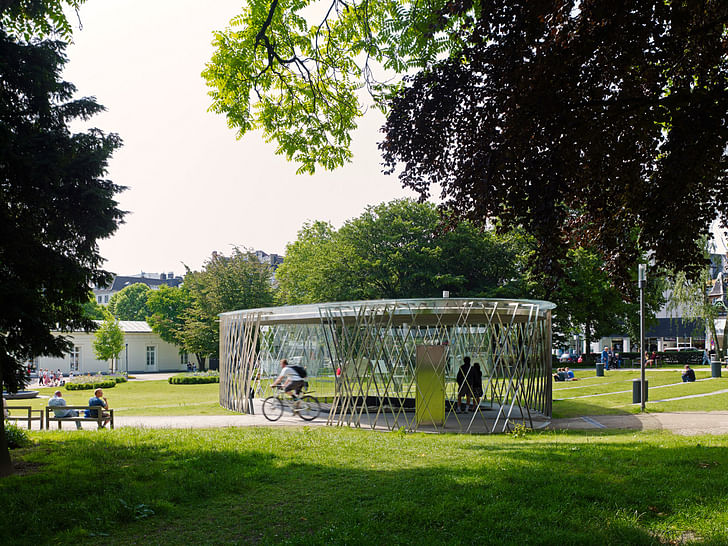
LAYERS AND THE IN-BETWEEN SPACE With conscious dissociation from the common glass vitrines found throughout the urban context, a stainless steel construction encases the necessary glass enclosure. An exciting in-between zone is thus created, opening up to the surrounding park inviting one to rest or engage with the urban history – a contemplative refuge in the midst of urban bustle. The outside shell consists of two delicate layers of diagonally overlapping steel profiles. The inner vitrine provides the second shell in the form of a glass enclosure. It enables various perspectives of the excavation site, regulates the natural air flow, and protects the spectacular finds. At the same time it serves as a resource of information: a revolving timeline, a site map as well as a compact and clearly arranged illustration of the found structures and artifacts (printed on a light translucent film), informing the visitor without obscuring the vision of the site.
The elliptical shape of the archaeological vitrine has been formally integrated into the language of the garden landscaping. The adequate proportionality and moderate appearance – like a pavilion or urban furniture – takes into consideration its park location. The path tangent to the archaeological site leads through the pavilion so that a walk in the park is easily turned into an exploration “en passant” of the archaeological vitrine. The mesh width and dimensions of the stainless steel profiles guarantee great transparency and permeability and offer exciting visual relations between the archaeological findings and the surrounding park.

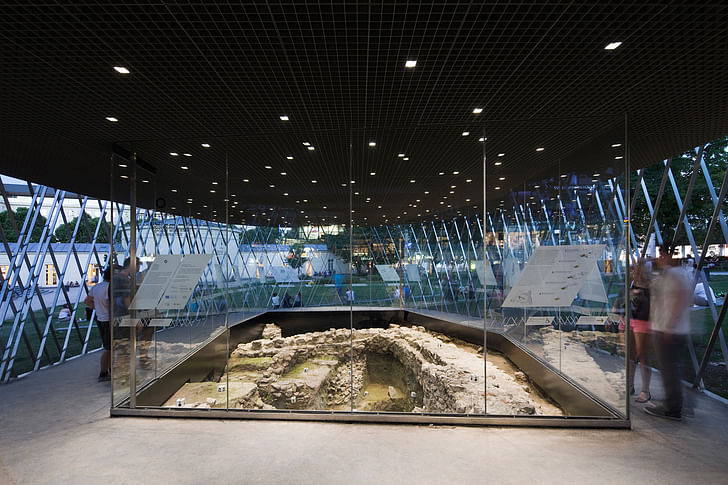
Identification The archaeological pavilion clearly shows how important a small intervention can be to the inhabitants’ identification with their city. The exceptional interest of the public in the history of their own city has been demonstrated by large numbers of who watched over the excavation tent with great curiosity, the many intrigued passers-by during the construction, and the surge of visitors since the construction was finished. The civic engagement of a company from Aachen who generously supported the construction of the archaeological vitrine (enabling it, indeed, to be built at all) demonstrates a laudable form of cultural sponsoring. The project was mostly financed by the federal state of North Rhine-Westphalia with the firm DSA financing the city of Aachen's share in the project.
Archaeological WINDOW The site is an archaeological jewel in the historical center of the city. In order to make all the excavation results permanently visible, a number of “archaeological windows” can be found throughout the urban area. The archeological vitrine, as a direct structural intervention in the urban space, unveils the historic roots of the city of Aachen, and because of its weather-protected “in-between” room, it has become a common starting point for guided city tours. Furthermore, the vitrine has become one of the stations on the “Charlemagne Route” highlighting the traces of Charlemagne throughout historically significant locations in the city. For more detailed information, see route-charlemagne.eu and archaeologische-vitrine.de.

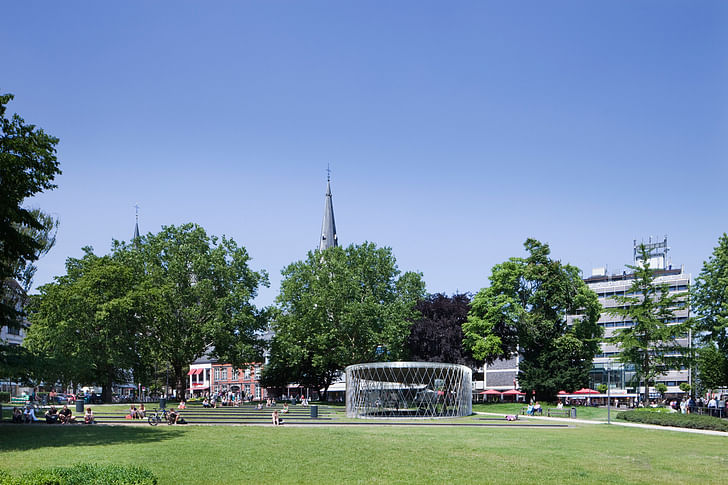
Construction AND Material One of the structural challenges was to place the loads without interfering with the excavation site. The construction is mounted on 32 foundation piles (GEWI micropile). A floor grid of wide flange beams (HEB H-section) lies on the foundation piles. On top rests a trapezoidal profiled-metal formwork filled with concrete and covered with mastic asphalt. The outer shell of the pavilion is not only the essential form-giving element of the design but also serves as the primary structure for the column-free pavilion. It is manufactured from laser-cut solid stainless steel profiles.
With a cross section of 50 x 15mm these are diagonally overlapped and welded together at the intersections. The roof construction consists of a steel frame with a steel grid underneath. The trapezoid sheet-metal shell is mantled with a roll-seam welded stainless-steel panel roofing, built without a slope. During the day, three skylights with light control louvres inside the horizontal glazing, provide a fine illumination of the site. In the evenings and at night, star-like LED-Downlights discreetly light the interior space and the finds. All visible parts of the steel construction are made of stainless steel.
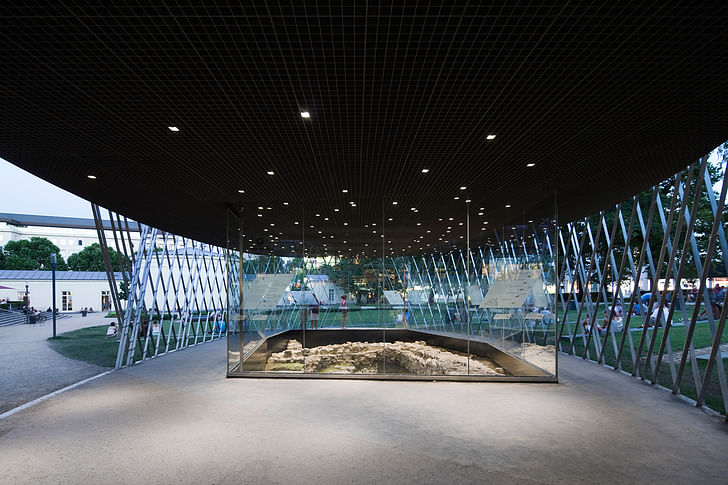
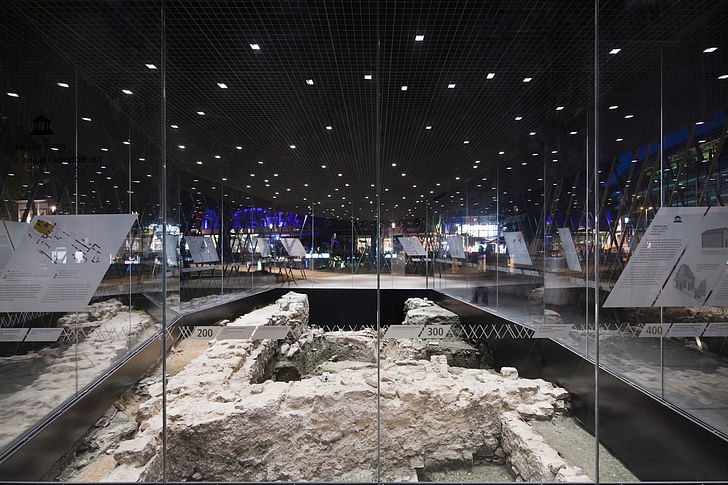
MONTAGE Altogether 12,3 tons of steel, 8,5 t stainless steel (material V4a 1.4571 and duplex-steel 1.4462) and 150m² VSG-glass were used. Because of the complex demands of the varied materials, the construction was manufactured and assembled off-site in a factory. The construction was then cut in four pieces and transported by heavy-load vehicles to the construction site and re-assembled. In order not to endanger the excavations during the assembly, the site was covered with sand and a temporary scaffolding was erected.


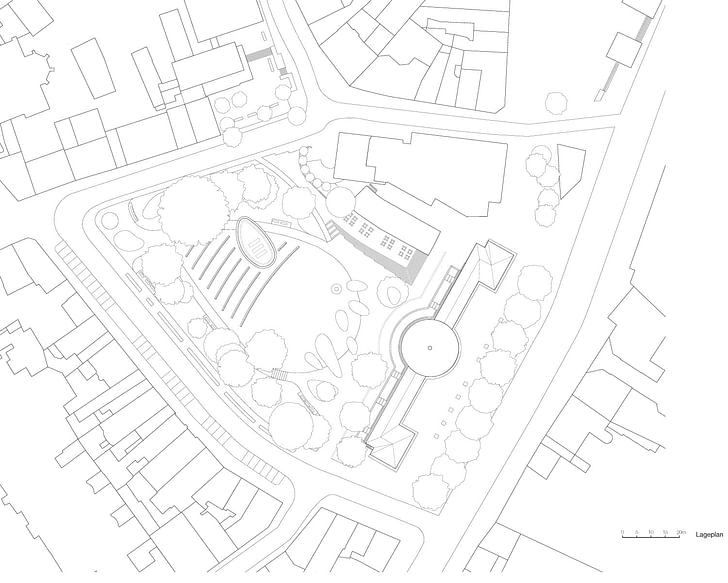
ARCHaeOLOGical Pavilion, Aachen, Germany:

Former Managing Editor and Podcast Co-Producer for Archinect. I write, go to the movies, walk around and listen to the radio. My interests revolve around cognitive urban theory, psycholinguistics and food.Currently freelancing. Be in touch through longhyphen@gmail.com
No Comments
Block this user
Are you sure you want to block this user and hide all related comments throughout the site?
Archinect
This is your first comment on Archinect. Your comment will be visible once approved.